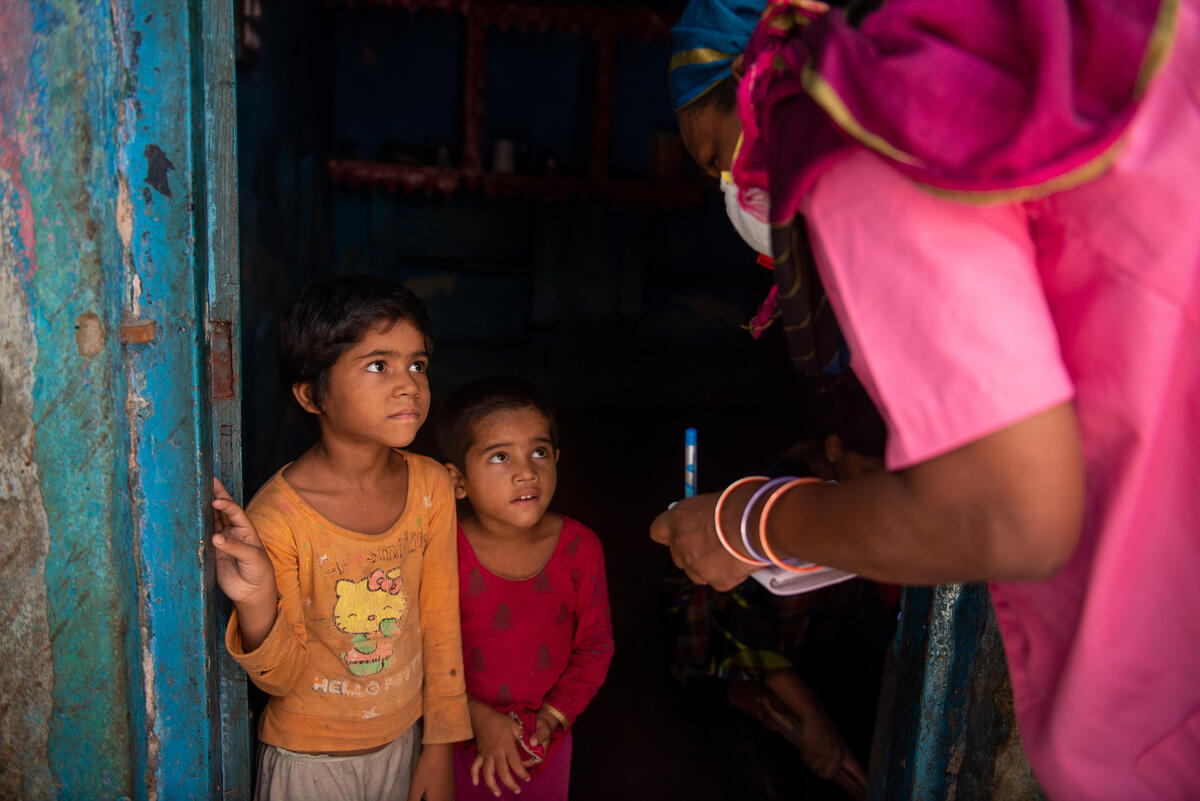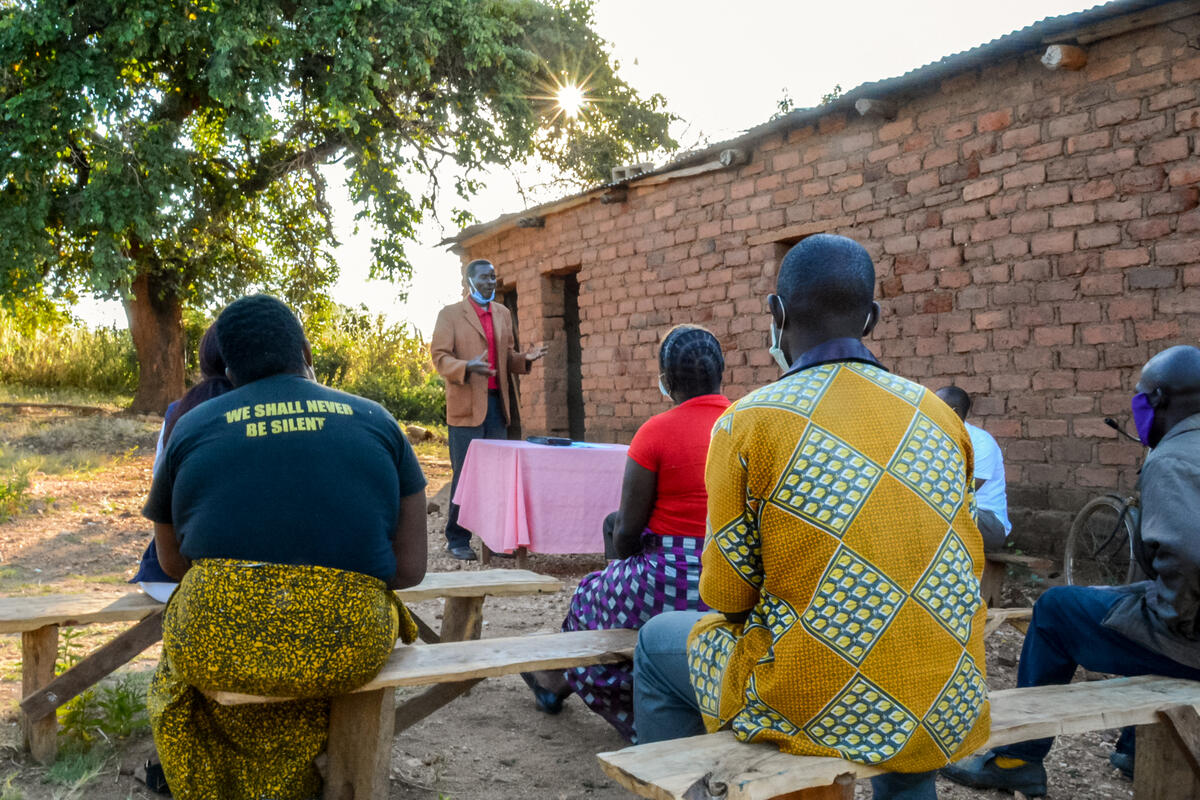5 ways child sponsorship enhances child protection

Violence takes many forms. Conflict and war. Exploitation. Negligence and abuse. Some of it is played out in world news headlines, but some of it happens in secret, behind closed doors. But every year,1.7 billion children are affected by violence.
Take a moment to think about that. If every one of those 1.7 billion children laid a piece of paper on a pile, it would stand 100 kilometres high. That’s the height of 11 Mount Everests stacked on top of each other.
Here are five ways child sponsorship works to protect children from violence.

1. Knowing and being known
Being sponsored means a child is seen – by their sponsor, by World Vision staff and our community volunteers, by our networks of local community leaders and partners, and by their government. That means that every one of the 3.3 million children in the child sponsorship programme has an alliance of people committed to caring for and looking out for them. Child sponsorship staff and volunteers know each child’s personal situation and are proactively working to keep them safe.
There hasn’t been a day that our work to protect children has stopped, even when COVID-19 restrictions have prevented our staff from visiting the communities we work with.
We’ve used our locally-based volunteers as well as mobile phones, WhatsApp, social media and any other locally available technology to continue monitoring children’s health and well-being and respond to their needs, whether that’s COVID-19 prevention information, resources to enable them to continue learning from home, online counselling or psychosocial support, medical care, or intervention from local police.
We also help children’s families to register their birth – a simple thing that makes them less vulnerable to exploitation or abuse. Birth certificates – something many of us take for granted – are critical to making kids visible to their government and providing an important layer of protection.
Without a birth certificate, a child might not be able to enroll for school, access public healthcare, prove they are too young to marry, or be tracked down if they are separated from their family. Birth registration is a key to lots of basic opportunities for a child, and child sponsorship helps makes sure they can open those doors.

2. Empowering children
Children themselves are at the core of our approach to child protection. Children have rights – to safety, education and freedom from abuse, among others. When they understand those rights, children are less vulnerable to exploitation.
But more than that, when children are empowered to enjoy their rights, they can become a powerful force for change. When children and young people learn to communicate opinions, take responsibility and make decisions, they develop a sense of belonging, justice, responsibility and solidarity – all of which can be pivotal to ending violence in their generation, and the next.
-
In Lebanon, we are using a puppet show to teach children about their rights and creating safe spaces for them to play.
-
In Kenya, we are working with girls to understand that female genital mutilation is both damaging and illegal, and encouraging them to look out for each other.
-
In Bangladesh, we are supporting children to establish Child Forums where they work together to end child marriage by reporting cases, finding birth certificates to prevent underage girls from being married and advocating for an end to the practice.
And it’s working – children in Bangladesh stopped over 70 child marriages in their communities over two years. All around the world, children have been stepping into the frontline in their communities and taking action to keep children safe and call out violence when it occurs.

3. Educating and supporting parents
Families should be children’s fiercest protectors – but sometimes, they are the enablers or even the perpetrators of the violence that children experience. The COVID-19 pandemic has heightened the risk of physical, emotional and/or sexual abuse that some children face, with lockdowns isolating them from their broader school and community networks and the protection that they afford.
At the same time, the economic stress caused by the lockdowns and other COVID-19 related effects can make desperate families more vulnerable to the financial lures of subjecting their children to child labour, child marriage, child prostitution and child trafficking.
We are working to combat these aftereffects by teaching caregivers about positive parenting and discipline techniques, children’s rights and the law, the importance of education, and the risks and consequences of putting children into exploitative situations.
We are also tackling the economic drivers of exploitation and violence by providing caregivers with emergency food, cash and vouchers so they can meet their families’ needs, helping them to rebuild their livelihoods with training, equipment, capital resources and access to financial services, and connecting them to counselling, psychosocial support, or just a listening ear.

4. Mobilising communities
Community-based development is at the heart of child sponsorship, and we are mobilising communities in the 54 countries where we work to protect children from violence.
In each of these communities, we build strong, trusted relationships with local partners, including teachers, police, health workers, local government, community organisations and businesses, as well as leaders from many faiths, who are often the most trusted and authoritative voices in their communities.
Some of these faith leaders may have promoted gender inequality, stigma, family violence and harmful traditional practices like child marriage and female genital mutilation in the past, so we work with Christian, Muslim, Hindu and other leaders to address misconceptions, and empower them to inspire their communities to better meet the needs of the most vulnerable.
Our global network of more than 400,000 trained faith leaders have been mobilised throughout the COVID-19 crisis to raise awareness and encourage their communities to protect children from violence.
We also partner with over 150,000 community volunteers who live and work in the same communities as our sponsored children, equipping them to monitor and support children’s well-being and become catalysts for community change to end violence against children.
During COVID-19 lockdowns, these community volunteers have been an ever-present safety net for children, even when schools and other services were closed, because they live in the same neighborhood.
They are helping to change community’s views on issues like child marriage, child labour and physical discipline; they are equipping caregivers with positive parenting techniques; and when violence against children occurs, they are reporting it to authorities – and explaining to others in their community why and how to report violence too.
And it’s not just sponsored children who benefit when communities come together to make the world safer for children. Because of our community-based development approach, for every child who is sponsored, four more children benefit too.

5. Advocating to government
Child sponsorship works at the grassroots – with children, their families and communities – to protect children from violence. But we know that government’s have an important role to play if the world is to achieve the Sustainable Development Goal of ending abuse, exploitation, trafficking and all forms of violence against children by 2030.
A 2019 World Vision study of national legislation and policies to protect children from violence in 20 countries found significant legal gaps, fragmented initiatives and a lack of resources dedicated to implementing them. That’s why advocacy is also an important part of our work: influencing governments to strengthen laws, policies, programs and services to protect children, empowering communities to hold governments accountable, and building evidence to drive change.
With governments around the world rapidly developing and implementing COVID-19 management plans with cascading effects on children and their futures, being a voice for children has never been more important.
- In Ghana, we’re working with the government to review legal protections against child marriage and with local authorities to make sure laws are enforced.
- In Nepal, we’re working with national and provincial governments to protect child rights in COVID-19 plans, including ensuring child-safe quarantine facilities.
Together, we are building structures and networks that will protect children now and in the years to come.
A world without violence against children is possible. World Vision’s global campaign, It takes a world to end violence against children, is catalysing a global movement of people committed to keeping children safe from harm and violence.
Standing with children and their families, faith leaders, communities and governments, child sponsors are helping to create lasting change so that every child can live life free from violence.